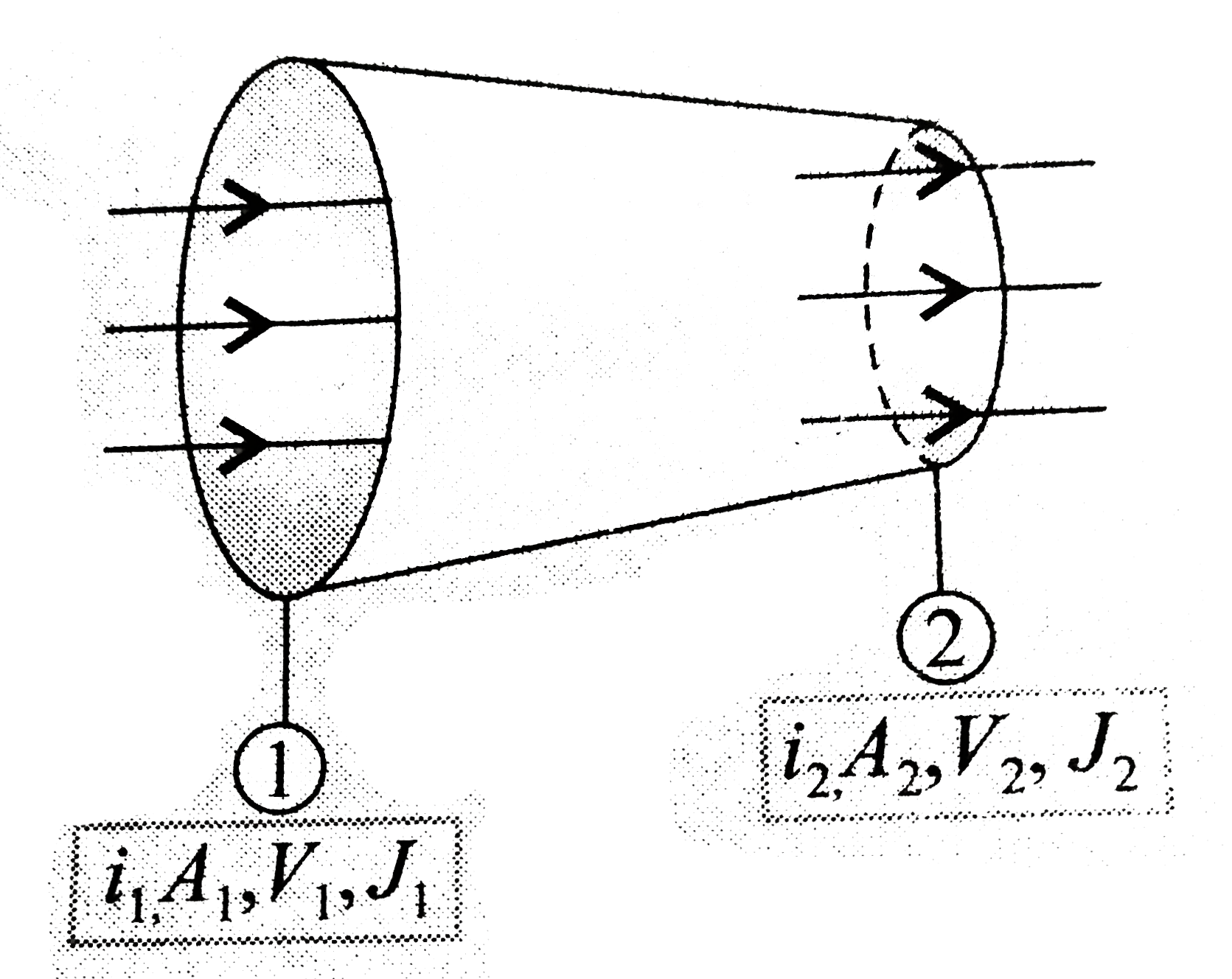What is drift velocity? Establish a relation between current and drift velocity?
Step-by-Step Solution
1. Definition of Drift Velocity:
Drift velocity (vd) is defined as the average velocity of charge carriers (typically electrons) in a conducting wire when an electric field is applied. It represents the net velocity of the charge carriers in the direction of the electric field.
2. Understanding Charge Density:
Let’s denote:
- n = number of charge carriers per unit volume (number density)
- e = charge of an electron
- A = cross-sectional area of the wire
- d = length of the wire segment considered
The total charge Q in a segment of the wire can be expressed as:
Q=n⋅e⋅A⋅d
This is our Equation 1.
3. Time Calculation:
The time t taken for the charge carriers to drift through a length d at drift velocity vd is given by:
t=dvd
This is our Equation 2.
4. Current Definition:
Current I is defined as the rate of flow of charge, which can be expressed as:
I=Qt
Substituting Q from Equation 1 and t from Equation 2 into this equation gives:
I=n⋅e⋅A⋅ddvd
5. Simplifying the Expression:
When we simplify the above expression, the d in the numerator and denominator cancels out:
I=n⋅e⋅A⋅vd
6. Final Relation:
Thus, we establish the relationship between current I and drift velocity vd as:
I=n⋅e⋅A⋅vd
Conclusion:
This equation shows that the current in a conductor is directly proportional to the number density of charge carriers, the charge of each carrier, the cross-sectional area of the conductor, and the drift velocity of the charge carriers.
---
Drift velocity (vd) is defined as the average velocity of charge carriers (typically electrons) in a conducting wire when an electric field is applied. It represents the net velocity of the charge carriers in the direction of the electric field.
Let’s denote:
- n = number of charge carriers per unit volume (number density)
- e = charge of an electron
- A = cross-sectional area of the wire
- d = length of the wire segment considered
Q=n⋅e⋅A⋅d
This is our Equation 1.
The time t taken for the charge carriers to drift through a length d at drift velocity vd is given by:
t=dvd
This is our Equation 2.
Current I is defined as the rate of flow of charge, which can be expressed as:
I=Qt
Substituting Q from Equation 1 and t from Equation 2 into this equation gives:
I=n⋅e⋅A⋅ddvd
When we simplify the above expression, the d in the numerator and denominator cancels out:
I=n⋅e⋅A⋅vd
Thus, we establish the relationship between current I and drift velocity vd as:
I=n⋅e⋅A⋅vd
This equation shows that the current in a conductor is directly proportional to the number density of charge carriers, the charge of each carrier, the cross-sectional area of the conductor, and the drift velocity of the charge carriers.
Topper's Solved these Questions
- BOOK - VMC MODULES ENGLISHCHAPTER - DC CIRCUITEXERCISE - LEVEL-1 DAILY TUTORIAL SHEET-115videos
DC CIRCUIT
- BOOK - VMC MODULES ENGLISHCHAPTER - DC CIRCUITEXERCISE - LEVEL-1 DAILY TUTORIAL SHEET-215videos
DC CIRCUIT
- BOOK - VMC MODULES ENGLISHCHAPTER - DC CIRCUITEXERCISE - LEVEL-0 SA-II: Short Answer Type - II12videos
DC CIRCUIT
- BOOK - VMC MODULES ENGLISHCHAPTER - CURRENT ELECTRICITYEXERCISE - IN-CHAPTER EXERCISE-F10videos
CURRENT ELECTRICITY
- BOOK - VMC MODULES ENGLISHCHAPTER - DYNAMICS OF A PARTICLEEXERCISE - JEE Advance (Archive) Level - II (SINGLE OPTION CORRECT TYPE )31videos
DYNAMICS OF A PARTICLE
Similar Questions
Genetic drift
View SolutionGenetic drift
View SolutionDefine the term 'drift velocity' of electrons in a current carrying conductor. Obtain the relationship between the current density and the drift velocity of electrons.
View SolutionWhen current is 4 A in a conductor the drift velocity is vd. When the current is 3 A the drift velocity will be
View SolutionRelation between magnetic moment and angular velocity is -
View SolutionRelation Between Drift Velocity And Current
View SolutionWrite the mathematical relation between mobility and drift velocity of charge carriers in a coductor. Name the mobile charge carriers responsible for conduction of electric current in (a) an electrolyte (b) an ionised gas.
View SolutionCurrent is flowing from a conductor si nonuniform cross sectional area. If A1>A2, then find relation between
a. i1andi2
b. j1andj2
c. (vd)1and(vd)2
(drift velocity) where I is current, j is current density, and V is drift velocity.
 View Solution
View SolutionDefine drift velocity of free electron . If relaxation time is r then write a vector relation b etween drift velocity and electric field.
View SolutionWhat is the relation between Velocity, displacement and time?
View Solution

